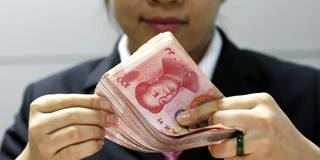In August 2015, the People’s Bank of China established that central parity of the renminbi's exchange rate against the US dollar would be set with reference to the previous trading day’s closing price. But that much-needed step toward a more flexible, market-driven exchange rate was quickly – and wrongly – abandoned.
BEIJING – On August 11, 2015, the People’s Bank of China (PBOC) established that the central parity of the renminbi’s exchange rate against the US dollar would be set with reference to the previous trading day’s closing price, within a 2% band. It was a bold step toward a more flexible, market-driven exchange rate. But the announcement of the reform caused the market to panic, triggering a 3% decline in the renminbi in just four trading days. So it was quickly abandoned.

BEIJING – On August 11, 2015, the People’s Bank of China (PBOC) established that the central parity of the renminbi’s exchange rate against the US dollar would be set with reference to the previous trading day’s closing price, within a 2% band. It was a bold step toward a more flexible, market-driven exchange rate. But the announcement of the reform caused the market to panic, triggering a 3% decline in the renminbi in just four trading days. So it was quickly abandoned.